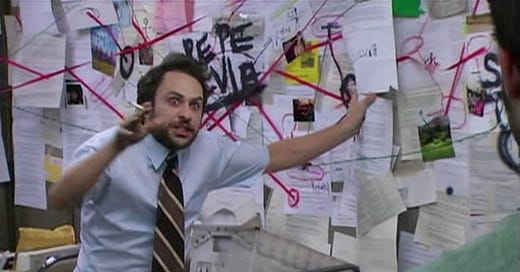Disclaimer: This is a theory based on the contents of the 5e DMG and the direction of the D&D brand as a whole. This is not intended as a statement of fact.
In a recent livestream, D&D YouTuber and fellow Rush fan Matt Colville made some comments about 5th Edition D&D and Baldur’s Gate III that stirred up controversy online. The thrust of Colville’s argument was that Baldur’s Gate III delivered on the promises of D&D more than any human Dungeon Master ever could. I will be giving my thoughts on that argument in a future livestream with Gelatinous Rube and Alchemical Raker, but today I wanted to address a separate point that Colville made during that stream. In support of his argument, Colville made the assertion that 5e was designed to be read and approved of by old-school players, but not actually played. This is an interesting point, especially when you consider how bare-bones many of the subsystems are in 5e, but I think this point hints at a larger issue with 5e. The larger issue is that 5e is not the product it was originally intended to be and that becomes evident when you read the three core books. In the Dungeon Master’s Guide especially, many of the optional rules, appendices, and more obscure rules hint that 5e was supposed to be closer in spirit to an OSR-style game. What happened to this original vision? It was buried by changes in management philosophy and cultural shifts that moved the game in the direction we see now.
To understand what Fifth Edition was supposed to be, we have to go back eleven or twelve years to the time in which 5e was being developed. My good friend Krafty Matt called this era the “D&D Next Era” as that was the term being bandied about at the time. Much like the push for OneD&D today, D&D Next promised essentially an end to the Editions of yore and a single, unified D&D that all fans could rally around. People were burnt out on the very crunchy 4th Edition and the OSR was gaining clout and strength in many online circles. With 4e sales cratering and other games like Pathfinder growing in popularity, Wizards of the Coast set out to bring D&D back to its roots.
So far this is all common knowledge stuff, but how did we get from an old-school renaissance starting point to a game that's pretty far from old-school? Well, I think the notion of 5e being an old-school game died in development because games where it's easy to die would not test well in a focus group. It's easier to sell a game where you start out already powerful than one where you have to earn that power. This was one of the core concepts behind 4e. However, 4e was unpopular so WotC had to at least make this game appear to be more old-school than it was. This is where Matt Colville’s argument about 5e being read but not played comes in. There are rules for old-school concepts like dungeon crawling, wilderness survival, etc, but those systems are pretty shallow and not well-presented by the books. Subsequent products that were focused on bolstering the old-school nature of 5e like the DM Screen Wilderness Survival Kit were released without much marketing behind them to basically rot on shelves. As people like Krafty Matt are quick to point out, these ideas are in the text of 5e but they are very much shoved to the side. As Matt Colville said, they are there to be seen, but not used.
The need to maintain the old-school facade was burned up by the cultural shift that washed over everything following the 2015-2016 election cycle. Mike Mearls was kicked upstairs into an executive position and D&D development was shifted over to people who wanted to focus more on running coffee shops in The Radiant Citadel than surviving in the wilderness or exploring dungeons. This beings us to today where WotC no longer even pretends to care about what old-school fans want from a game. So where does this leave us? Was 5e written to be approved of by old-school fans without actually having deep old-school play? Yes and no. Yes, that’s what it ultimately became, but you still have these old-school concepts that exist largely in the appendices. What we have is a classic case of certain designers on the team having a vision for the project and the higher-ups having a different vision. This kind of thing happens all the time in game development, but rarely is it this visible. It seems to me that a lot of the early development was dedicated to making a more old-school game that was changed by the time playtesting began.
To summarize, my theory is that D&D Next began life as a more old-school game focused on dungeon crawling, wilderness exploration, and survival. Somewhere early in development, a boardroom or executive decided to pivot the game in a more heroic direction, but the remnants of this old-school game remain in certain places. However, those traces of what the game was are not enough to fully resurrect the intended game and all of these traces will likely be wiped out by the 2024 updated DMG. Throughout the early days of marketing 5th Edition, the intention was to bring old-school players back. Once they had their money though, nothing else. mattered.




